Best Model Skeletons
Choose one of these model skeletons to help you teach or learn all about human anatomy.
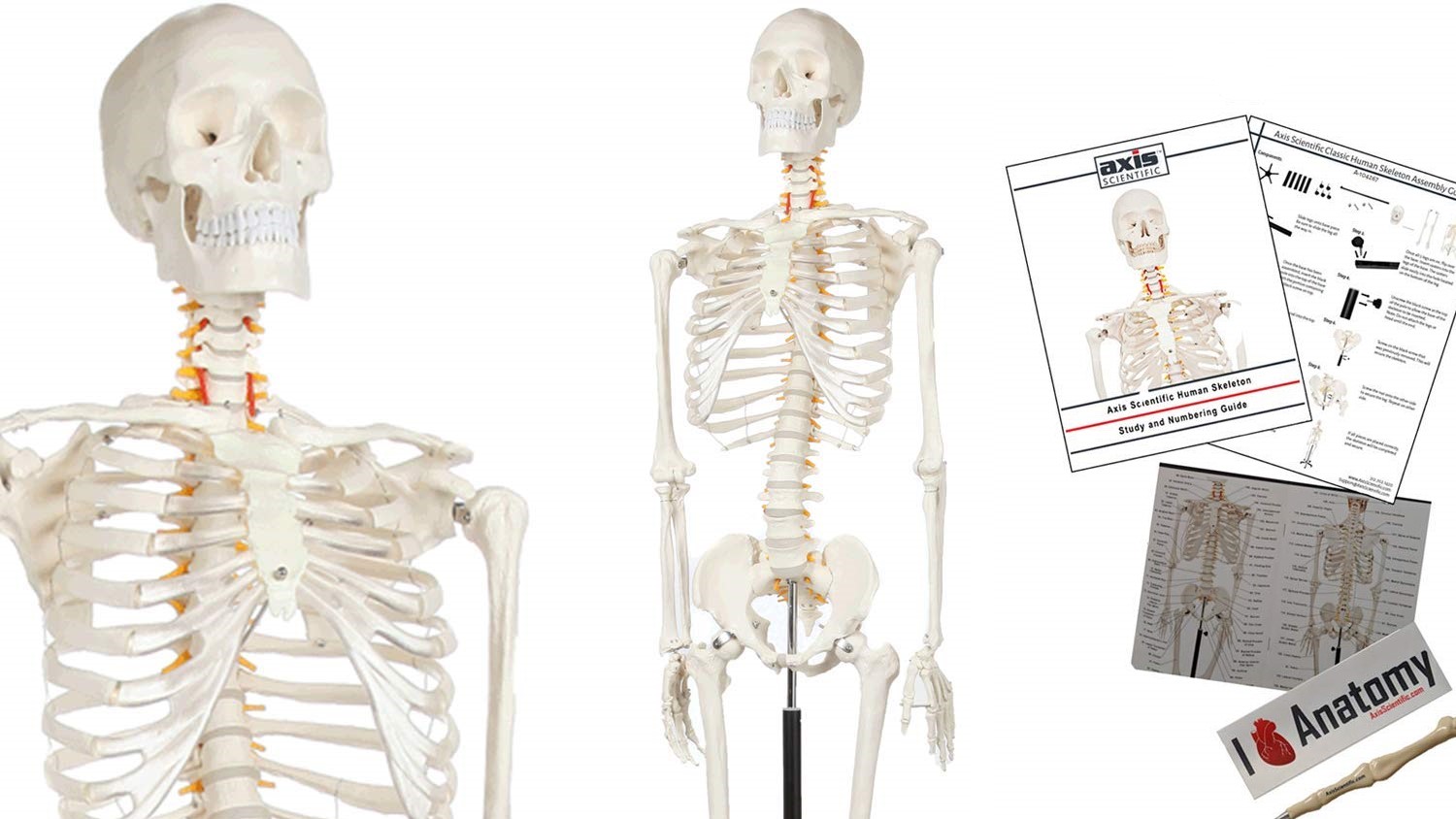
The best way to teach an anatomy class is with top-notch visual aids. A model skeleton is a staple in most biology classrooms and this list of models ranges from lifesize adults to infants. The best is Sam the Super Skeleton with its included stand, access to anatomy lectures and courses, and over 600 identified body parts. But there are a few other models that might be a better fit for your needs.
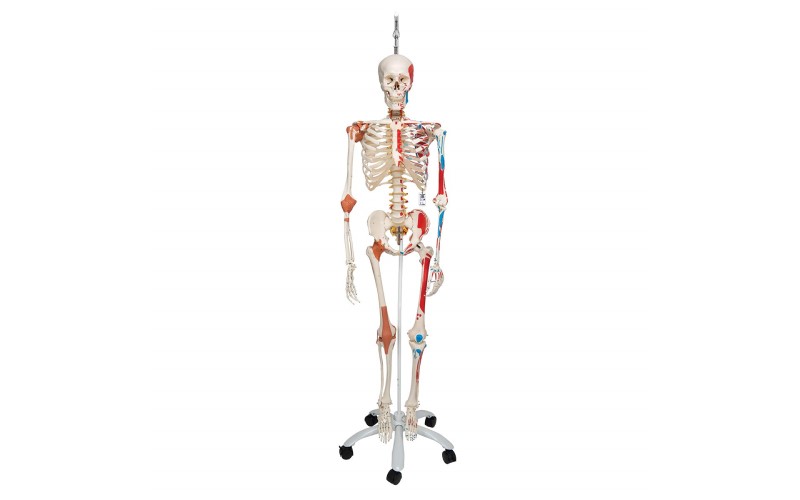
Sam the Super Skeleton by 3B Scientific
Sam I Am
Sam the Super Skeleton has over 600 identified bones and body parts. It includes a stand and access to the Compete Anatomy app.
Pros:
- Lifesize
- Flexible joints
- Hanging stand
- Muscle, nerves, and vessels identified
Cons:
- Very expensive
This human skeleton from 3B Scientific is lifesize to help you learn, or teach anatomy courses. Sam the Super Skeleton is clearly marked to show each bone plus has markings to show nerves, vessels, and ligaments. This skeleton model can be posed with working joints and comes with a hanging roller stand, so you don’t have to figure out how to stand him up on your own. Also included is a transparent cover to keep it dust-free in between lectures. Sam the Super Skeleton comes with free access to the Complete Anatomy app for help with hundreds of courses, lectures, interactive models, and quizzes. While this 3B Scientific skeleton model is the best, it does come with a pretty hefty price tag.
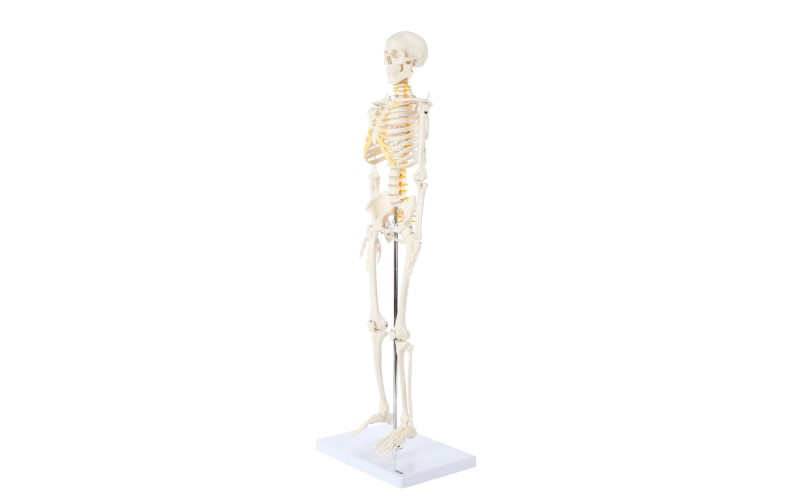
Axis Scientific Mini Human Skeleton
A mini-me
This mini skeleton is a good alternative if you’re on a budget. Each bone is properly constructed and the joints move.
Pros:
- Easy to handle
- Sturdy base
- Full range of motion
- Includes a study guide
Cons:
- Not lifesize
If you’re on a budget and a full-size human skeleton model is out of your price range, this mini human skeleton is a good alternative. The Axis Scientific anatomy model is just over two and a half feet tall, so you can still identify each bone in the human body. The joints move to show proper motion and the base of the model is sturdy to prevent tipping or slipping during your lecture. Students can handle this model for more hands-on learning and after class, it can stand on your desk or on a shelf for as a neat decorative piece. Axis Scientific includes a full reference and study guide with this skeleton model that you can use to create lessons, or use to learn human anatomy on your own. The Axis Scientific mini human skeleton comes with a three-year warranty.

hBARSCI Disarticulated Human Skeleton
The best puzzle
The hBARSCI skeleton comes in pieces, or disarticulated, for more in-depth learning and quizzing. The skull cap can be removed.
Pros:
- Disarticulated skeleton model
- The skull cap is removable
- Full-size model
Cons:
- No markings
- Cannot be assembled
- No nasal bones
This full-sized human skeleton model isn’t put together as other models. Instead, each bone is removed or disarticulated and isn’t marked. This is a good way for students to learn and be quizzed on bone identification. Each vertebrate is disjointed and one hand and foot are completely disarticulated with the other intact so students have a visual of what they should look like. Each part of the skull cap is also removable so you can see the internal structure of these bones. However, the nasal bones aren’t included with the hBARSCI disarticulated skeleton. This model isn’t designed to be put together or displayed. There aren’t any tools or hardware to assemble it and it doesn’t come with a stand.

Huakan Human Baby Skeleton Model
The babe’s perspective
This skeleton model shows the intricate formation of a newborn’s skull and other bones in its body. It includes a stand and base.
Pros:
- Infant skeleton model
- Some parts are removable
- Includes a stand
- Made from eco-friendly materials
Cons:
- Isn’t made to scale
- Not lifesize
This skeleton represents an infant including the different parts of the skull. The head and legs can be removed fro more close-up learning and it comes with a base so the model can be displayed both during lectures and when not in use. Some of the joins and ligaments are shown on this skeleton. It’s made from lightweight PVS material, which is eco-friendly but doesn’t hold up as long as other skeletons. It also isn’t made to scale.
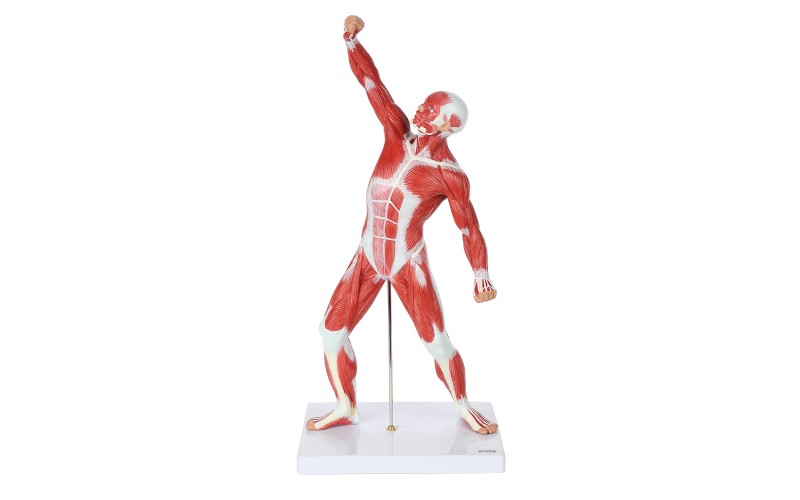
Axis Scientific Muscular System Model
More than skin and bones
This Axis Scientific skeleton model shows details of each human muscle system. It is small enough for students to handle.
Pros:
- Body and muscle structure
- Easy to pass around or display
- Detailed manual included
- Comes with a three-year warranty
Cons:
- Isn’t lifesize
- Not posable
This anatomy skeleton displays different muscles throughout the body in great detail. This mini model is only 20 inches high, including the sturdy base. This makes it easy to pass around to students to get a closer look or to display on a desk or shelf. The model’s stance gives you the optimal visual of the muscle anatomy and body structure of humans. Unfortunately, this model isn’t posable. This skeleton model includes a detailed manual with each muscle’s name clearly defined and a three-year warranty.
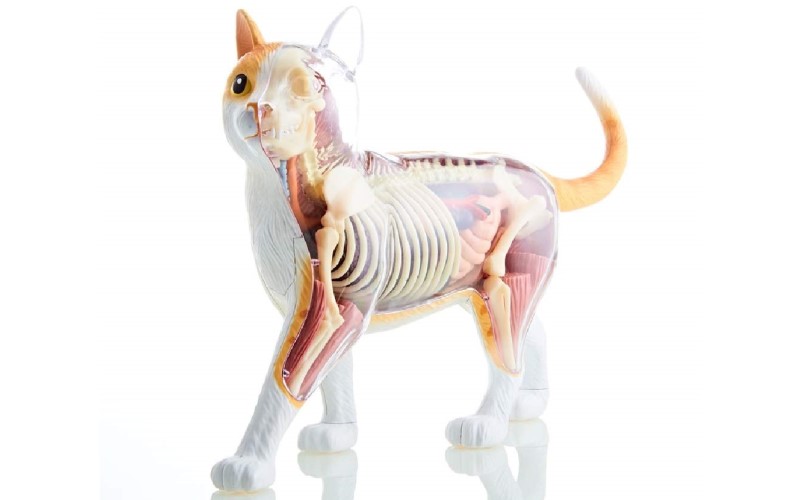
4D Visions Cat Skeleton & Anatomy Model Kit
Here kitty kitty
The 4D Master cat skeleton and anatomy model is a great way to teach animal anatomy or compare to human bones and organs.
Pros:
- Removable bones and organs
- Detailed handpainted parts
- 4D model
Cons:
- Not lifesize
Humans aren’t the only ones with skeletons and part of most anatomy classes is comparing the similarities between humans and other animals. This cat skeleton and anatomy model by 4D Vision show both the outside and inside parts of an orange tabby cat. The bone and internal organs are removable so it’s easier to compare these side-by-side to human anatomy models. An illustrated guide is included that identifies each part and has some fun quizzes to help with information retention. This animal model is very detailed with handpainted parts, but it is a bit smaller than a real-life cat.
Get the world’s most fascinating discoveries delivered straight to your inbox.
Bring the skeleton out of the closet
A full-size skeleton is the best way to learn about human anatomy and Sam the Super Skeleton by 3B Scientific is the top of the line. This skeleton model has over 600 markings showing each bone, vessels, muscles, and other body parts. Each joint moves in natural ways and it is posable so you can place Sam in a chair or on a bike to show proper form and function. This model includes a hanging, roller stand, and a clear cover to keep it clean in between lectures. As part of your purchase of the 3B Scientific skeleton, you get free access to the Complete Anatomy app. This program has quizzes, lectures, and hands-on lesson ideas that you can use to teach students or use yourself to self-tech anatomy. This skeleton model is really expensive, though. But a three-year warranty is included to cover any defects.

Nikki writes for multiple Future Publishing brands covering topics from antivirus to kitchen appliances to SAS. She has over 15 years of research and writing experience, including eight years of testing and reviewing consumer products. Nikki earned bachelor’s degrees in both English and Political Science with a focus on empirical research. In her spare time, Nikki serves as a member of several school councils and volunteers for a local arts board.


